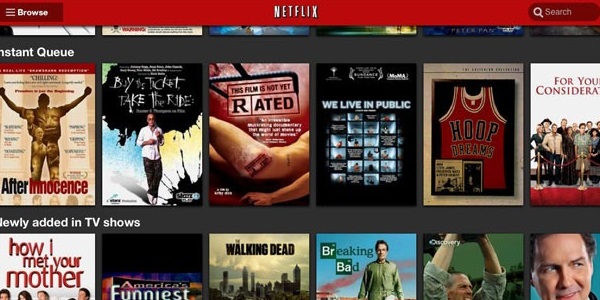2. New Approaches To Distribution

NetflixTechnically, television is an outdated term these days, as viewers are no longer restricted to watching shows on the device of the same name. Instead, they are now free to immerse themselves in programming by a diverse array of means. The continuing growth of the internet has been key to this development, as it has allowed streaming services such as Netflix to thrive. Such services have given viewers instant access to a frankly ridiculous amount of content on a number of devices, allowing them to catch up on familiar programming whilst discovering unfamiliar programming at the same time and expanding their tastes (British viewers discovered Breaking Bad in droves through the service for example, after it was never deemed airworthy by a traditional network). Netflix's subscription model has given it significant financial clout, to the point where it can now compete with networks by offering original programming such as the stunning House Of Cards to its members all in one go without forcing them to wait a week for each episode. Elsewhere, the internet has allowed traditional networks to diversify by offering catch-up services such as iPlayer, whilst more experimental twists on the subscription/streaming model continue to emerge, such as dedicated services for specific types of programming like the WWE network. It's also allowed people to embrace television through illegal means, but we won't delve too greatly into that...
 NetflixTechnically, television is an outdated term these days, as viewers are no longer restricted to watching shows on the device of the same name. Instead, they are now free to immerse themselves in programming by a diverse array of means. The continuing growth of the internet has been key to this development, as it has allowed streaming services such as Netflix to thrive. Such services have given viewers instant access to a frankly ridiculous amount of content on a number of devices, allowing them to catch up on familiar programming whilst discovering unfamiliar programming at the same time and expanding their tastes (British viewers discovered Breaking Bad in droves through the service for example, after it was never deemed airworthy by a traditional network). Netflix's subscription model has given it significant financial clout, to the point where it can now compete with networks by offering original programming such as the stunning House Of Cards to its members all in one go without forcing them to wait a week for each episode. Elsewhere, the internet has allowed traditional networks to diversify by offering catch-up services such as iPlayer, whilst more experimental twists on the subscription/streaming model continue to emerge, such as dedicated services for specific types of programming like the WWE network. It's also allowed people to embrace television through illegal means, but we won't delve too greatly into that...
NetflixTechnically, television is an outdated term these days, as viewers are no longer restricted to watching shows on the device of the same name. Instead, they are now free to immerse themselves in programming by a diverse array of means. The continuing growth of the internet has been key to this development, as it has allowed streaming services such as Netflix to thrive. Such services have given viewers instant access to a frankly ridiculous amount of content on a number of devices, allowing them to catch up on familiar programming whilst discovering unfamiliar programming at the same time and expanding their tastes (British viewers discovered Breaking Bad in droves through the service for example, after it was never deemed airworthy by a traditional network). Netflix's subscription model has given it significant financial clout, to the point where it can now compete with networks by offering original programming such as the stunning House Of Cards to its members all in one go without forcing them to wait a week for each episode. Elsewhere, the internet has allowed traditional networks to diversify by offering catch-up services such as iPlayer, whilst more experimental twists on the subscription/streaming model continue to emerge, such as dedicated services for specific types of programming like the WWE network. It's also allowed people to embrace television through illegal means, but we won't delve too greatly into that...